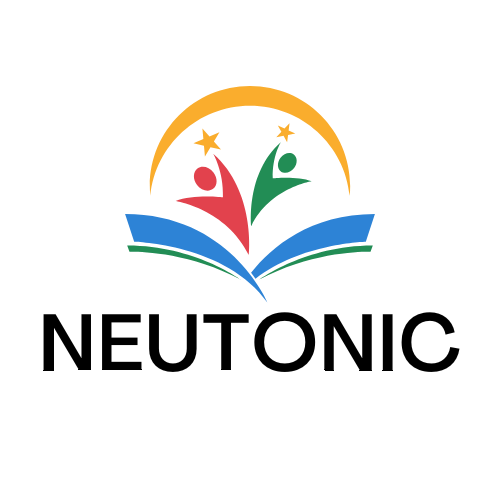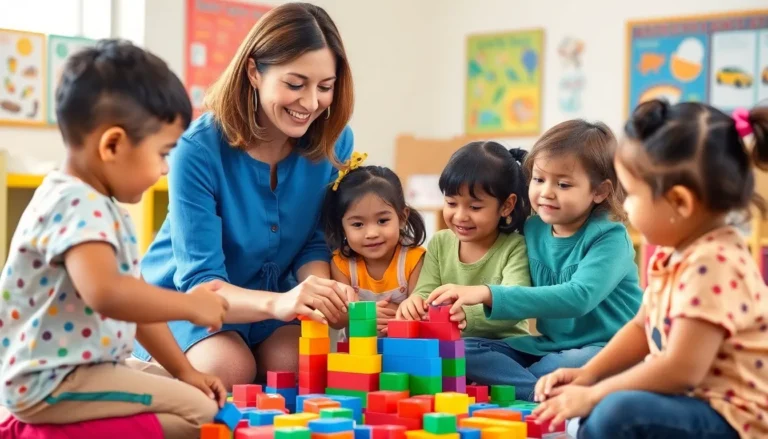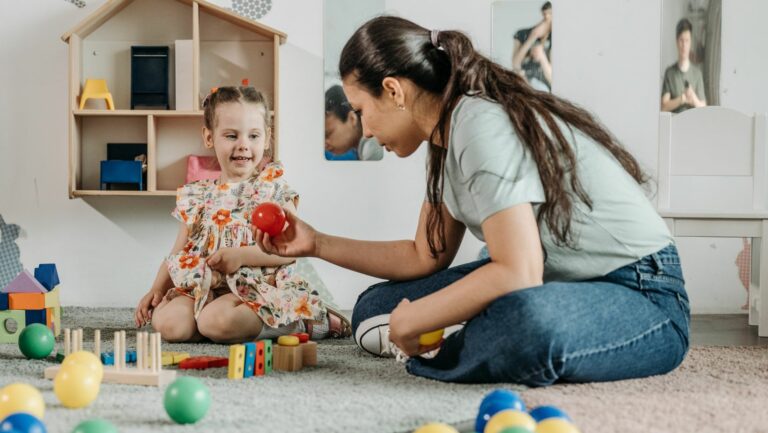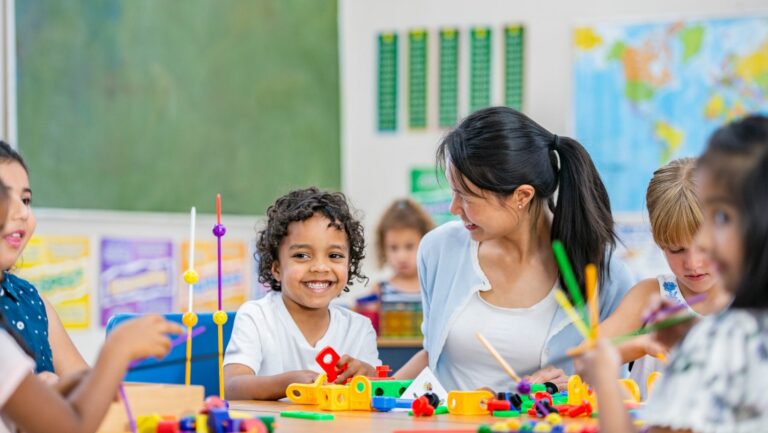When it comes to shaping a child’s future, early childhood education schools play a crucial role. These institutions lay the foundation for lifelong learning, helping kids develop essential skills during their formative years. I’ve seen firsthand how a nurturing environment can spark curiosity and creativity in young minds, setting them on a path to success.
Choosing the right early childhood education school can be overwhelming for parents. With so many options available, it’s vital to understand what makes a school truly effective. From engaging curriculums to dedicated educators, the right fit can make all the difference in a child’s educational journey. Let’s explore the key elements that define outstanding early childhood education schools and how they contribute to a brighter future for our little ones.
Key Takeaways
- Foundational Impact: Early childhood education schools significantly shape a child’s cognitive, social, and emotional development, laying the groundwork for future success.
- Curriculum Matters: Engaging, play-based curriculums are essential for stimulating curiosity and fostering critical thinking in young learners.
- Qualified Educators: Trained and experienced educators create supportive environments that enhance learning and cater to individual needs.
- Parental Involvement: Active participation from parents strengthens the home-school connection, contributing to a child’s overall development.
- School Types: Understanding the differences between public, private, Montessori, and Reggio Emilia schools helps families make informed decisions based on their child’s needs.
- Key Selection Criteria: Factors such as curriculum design, teacher qualifications, class size, and educational philosophy are crucial when choosing the right early childhood education school.
Early Childhood Education Schools
Early childhood education schools provide foundational learning experiences for children aged 0-8 years. These institutions focus on developing critical cognitive, social, emotional, and physical skills necessary for lifelong success. A well-structured curriculum emphasizes play-based learning, recognizing its vital role in fostering creativity and problem-solving abilities.
Key characteristics of effective early childhood education schools include:
- Curriculum Design: Engaging, age-appropriate programs that stimulate curiosity and exploration.
- Qualified Educators: Trained professionals skilled in early childhood development, ensuring a supportive learning environment.
- Diverse Learning Methods: Incorporation of various teaching strategies to cater to different learning styles, such as hands-on activities and collaborative projects.
- Parent Involvement: Opportunities for parents to participate in school events, promoting a strong home-school connection.
Challenges in selecting a suitable school often arise due to varying educational philosophies and quality indicators. Parents benefit from researching school accreditation, staff qualifications, and student-to-teacher ratios, which can significantly impact educational outcomes.
Importance of Early Childhood Education
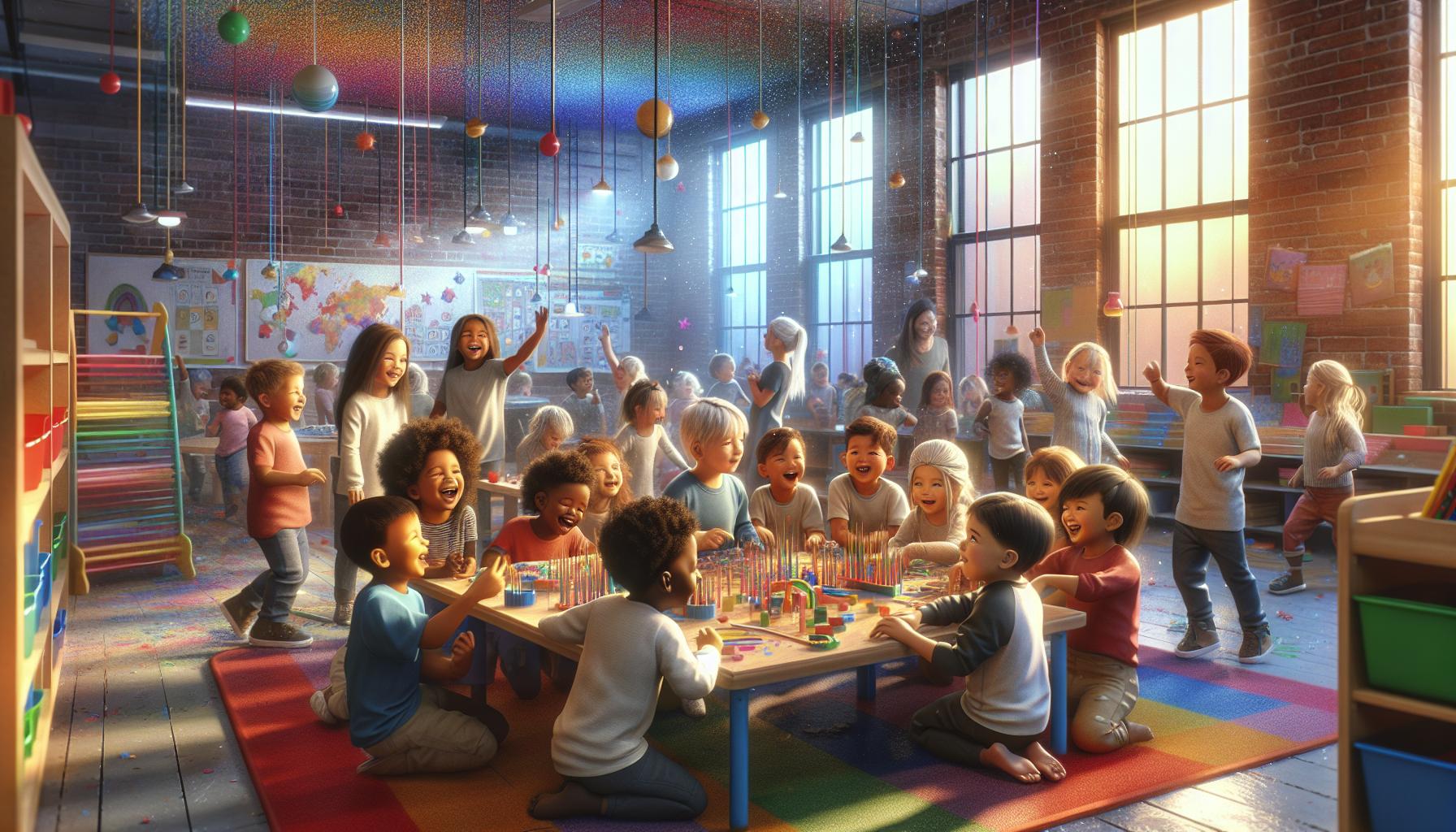
Early childhood education significantly shapes a child’s future. It lays the groundwork for cognitive, social, and emotional development, fostering lifelong skills.
Cognitive Development
Early childhood education boosts cognitive development by stimulating critical thinking and problem-solving skills. Programs designed for young learners use engaging activities that enhance language acquisition and early literacy. Children are exposed to diverse experiences, promoting curiosity and a love for learning. Research indicates that children enrolled in quality early education programs demonstrate higher academic achievement later in life, outperforming peers who lack such experiences (National Institute for Early Education Research, 2023).
Social Skills Development
Early childhood education cultivates essential social skills, helping children learn cooperation, communication, and conflict resolution. Children interact with peers in structured environments, learning to share, take turns, and express their feelings appropriately. This interaction fosters empathy and respect for others, crucial components of successful interpersonal relationships. Studies show that children who participate in early education programs exhibit improved social behaviors, leading to better relationships with teachers and classmates (Center for Responsive Schools, 2023).
Types of Early Childhood Education Schools
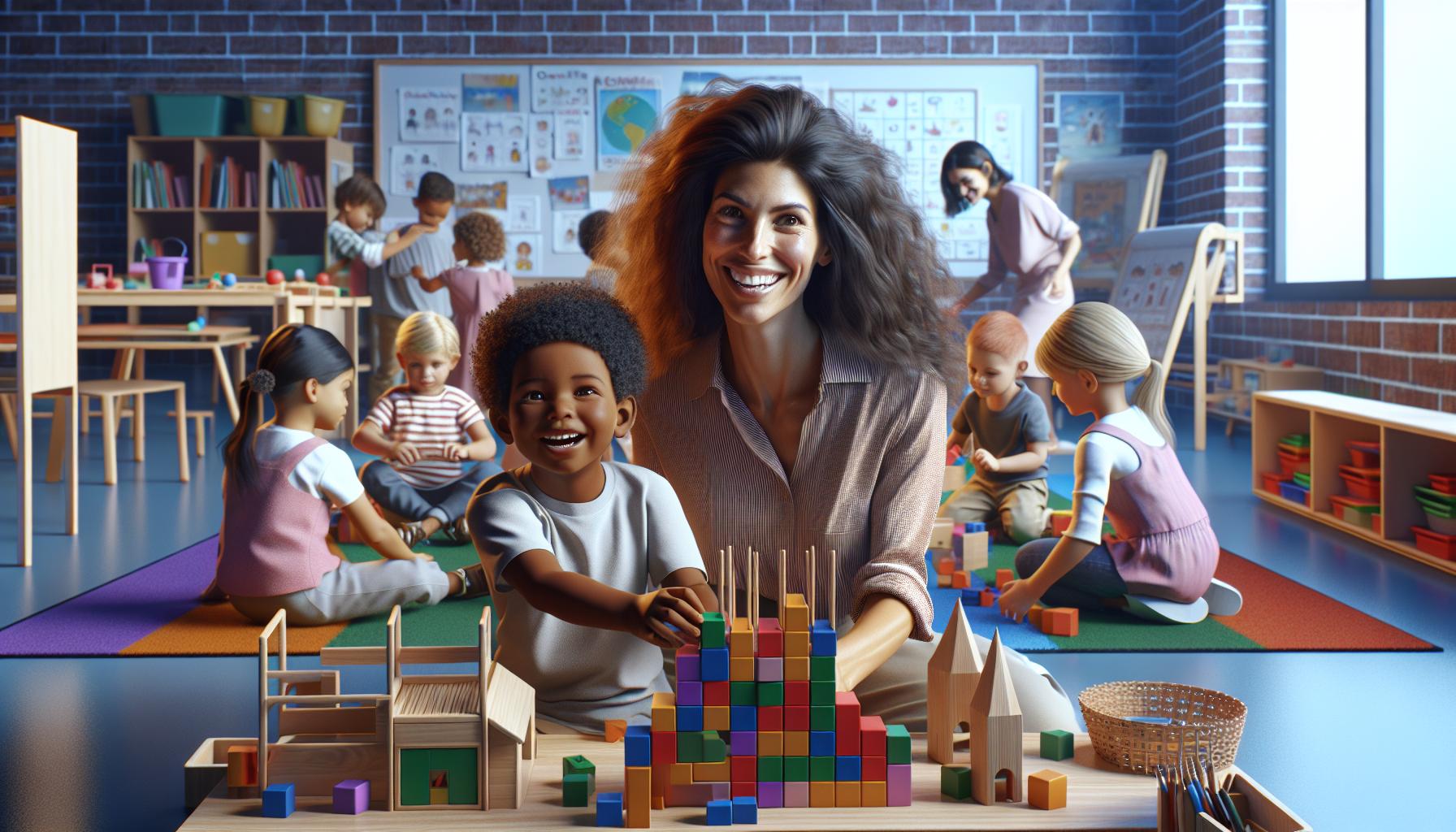
Early childhood education schools vary in structure and philosophy, catering to different needs and preferences of families. Understanding the distinctions among these schools helps in making informed choices.
Public vs. Private Schools
Public schools serve children through government funding, typically offering free admission. They often follow state-mandated curriculums and have larger class sizes, which may limit individualized attention. In contrast, private schools charge tuition and operate independently, allowing for more flexibility in curriculum design. These schools commonly promote smaller class sizes and personalized learning experiences, often leading to enriched educational environments.
Montessori and Reggio Emilia Approaches
Montessori schools emphasize self-directed learning, hands-on activities, and mixed-age classrooms. Children select activities based on their interests, promoting independence and intrinsic motivation. Conversely, Reggio Emilia schools focus on collaborative learning, valuing children’s questions and ideas. They utilize a project-based approach, allowing children to explore topics in-depth, fostering creativity and critical thinking. Both approaches cultivate a rich educational experience but differ in methodology and classroom dynamics.
Key Factors to Consider When Choosing a School
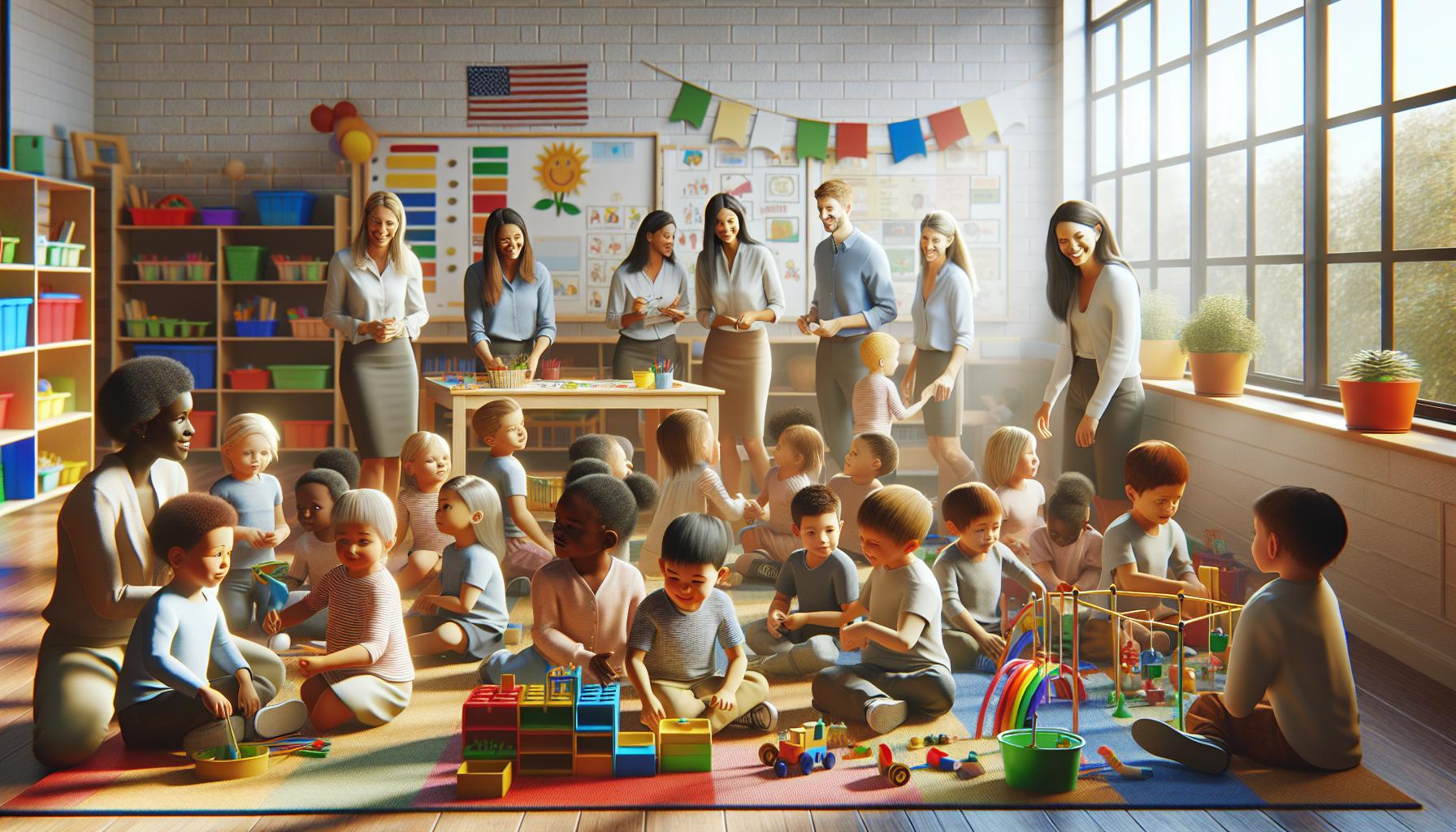
When choosing an early childhood education school, several key factors influence the decision-making process. Understanding these elements ensures that the selected institution aligns with a child’s needs and learning style.
Curriculum and Teaching Methods
Curriculum design and teaching methods vary significantly among early childhood education schools. Engaging curriculums often incorporate hands-on and play-based activities that cater to different learning styles. I focus on schools that emphasize early literacy, numeracy, and critical thinking skills. Diverse teaching methods, such as those found in Montessori and Reggio Emilia schools, highlight the importance of interactive learning and exploration. I consider how these approaches promote creativity and problem-solving in children, ensuring they develop essential skills that serve as a foundation for future learning.
Teacher Qualifications and Class Size
Teacher qualifications and class size play a crucial role in the quality of education provided. I prioritize schools with experienced, certified educators who possess a background in early childhood development. Smaller class sizes facilitate individualized attention and enhance the child-teacher ratio. A lower student-to-teacher ratio often correlates with better educational outcomes, as educators can spend more time addressing each child’s unique needs. I seek schools that demonstrate a commitment to professional development for their staff, ensuring they remain informed about the latest teaching strategies and best practices in early childhood education.
Choosing the right early childhood education school is a crucial step in setting the foundation for a child’s future. It’s about more than just academics; it’s about nurturing curiosity creativity and essential social skills. I believe that by prioritizing engaging curriculums and qualified educators parents can significantly enhance their child’s learning experience.
As I navigate this important decision I encourage parents to explore various options and consider what aligns best with their child’s needs. The right environment can make all the difference in fostering a love for learning that lasts a lifetime. Investing time in research and understanding each school’s philosophy will ultimately pay off in your child’s development and success.
